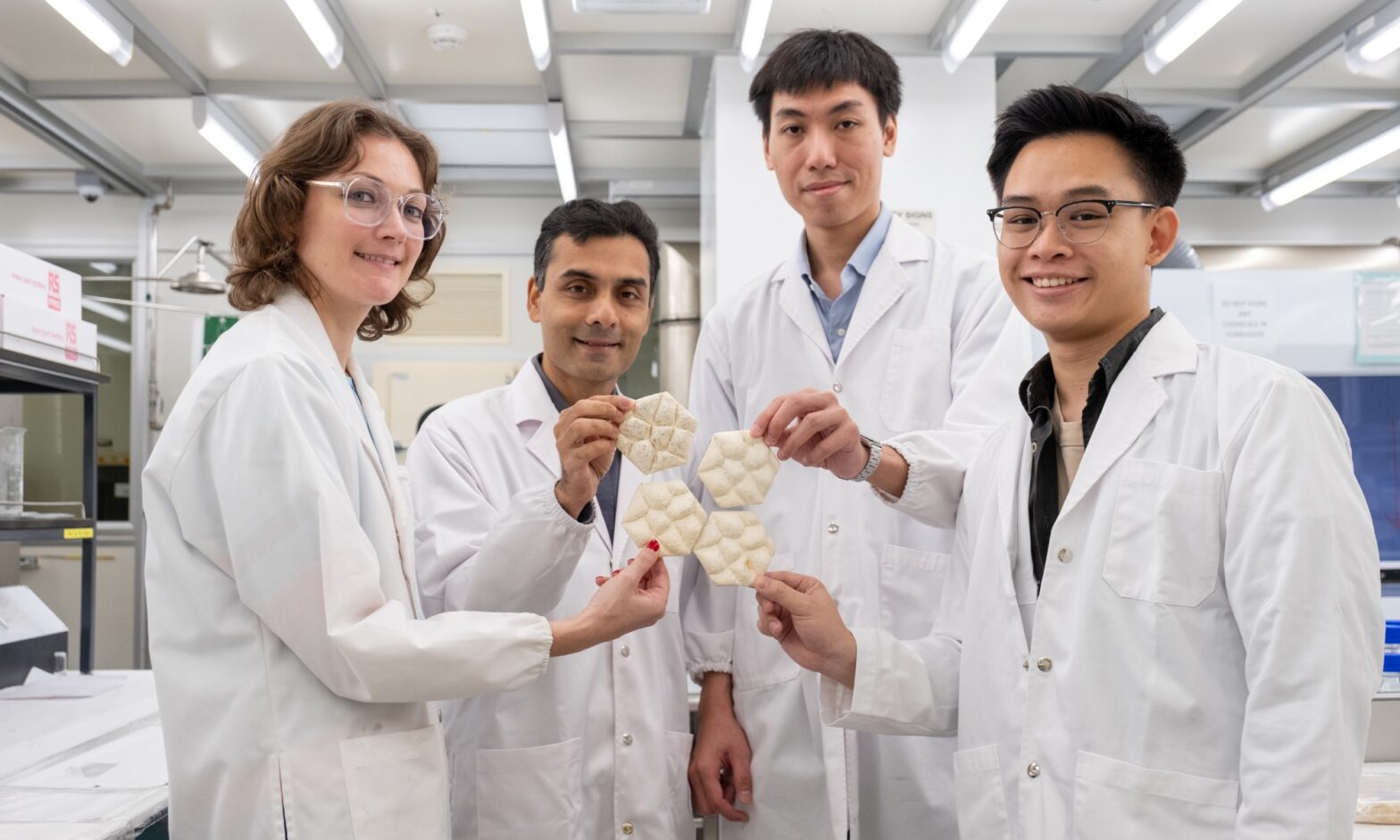The engineers in Singapore have developed a sustainable cooling plate made of mushrooms and bamboo. It is a new biodegradable building material that can imitate elephant skin and keep buildings cool without relying on air conditioning or electricity.
This innovative tile was created by a team from Nanyang Technological University (NTU) and combines the oyster mushroom myzel with repeated bamboo waste from furniture stores. Formed into a surface that resembles the deeply folded texture of the elephant skin, the tiles are designed so that they slow down the heat absorption and increase the moisture retention of the surface – two key factors that support passive cooling.
This approach inspired by bio deals with an important problem with the construction: cement and synthetic insulation materials are important sources for pollution and emissions. Cement alone is either percent of global carbon dioxide emissions. When the cities get hotter and energy requirements increase, the need for low -carbon alternatives is more urgent than ever.
The science behind this sustainable cooling plate is inspired by nature. Despite its size and lack of sweat glands, elephants regulate the body temperature through their high skin, which holds water and dissolves the heat over time. The NTU team replicated this effect in the tiles and used biomimicry to improve water retention and air flow. The result? A surface that remains cooler longer even under tropical conditions.
The mushroom base is environmentally friendly, porous and light qualities that make it a surprisingly effective insulation. In laboratory tests that are placed on a hot plate, the heat took more slow and cooled faster than conventional flat tiles. Rain simulations showed that water drops were tied together on the structured surface of the tiled, which contributed to the acceleration of evaporation cooling.
The growth of every sustainable cooling plate takes about a month, which is a challenge for mass production. However, researchers work with a local startup to examine the production and at the same time experiment with other mushroom trunks in order to optimize performance and durability.
In combination with other concrete alternatives, these cooling tiles could help to include a new age of building materials.
